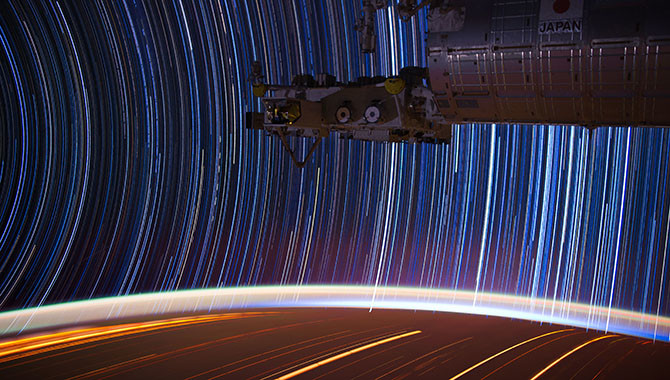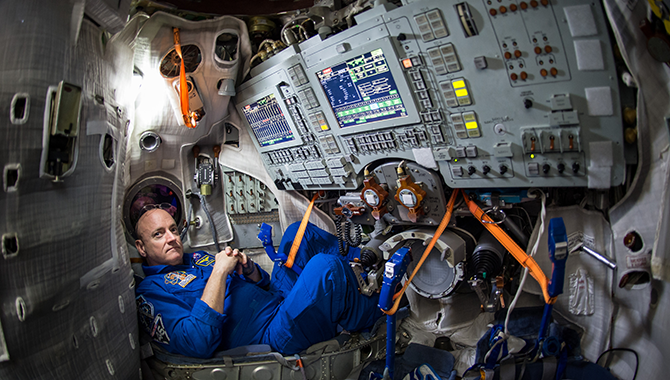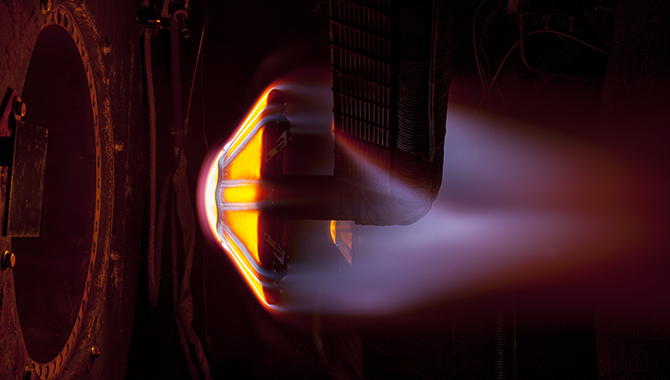
This unique “star trails” image was taken from the ISS by Expedition 31 Flight Engineer Dan Pettit. In order to create the image, Pettit took multiple 30-second exposures and stacked them using imaging software to evoke the effect of a 10- to 15-minute exposure.
Photo Credit: NASA
On November 2, 2015, NASA and its international partners celebrated a decade and a half of continuous human presence on the International Space Station (ISS).
The first people to work and live on the ISS arrived at the station on November 2, 2000. The Expedition 1 crew—Commander William Shepard (NASA), Flight Engineer Sergei Krikalev (Roscosmos), and Soyuz Commander Yuri Gidzenko (Roscosmos)—spent four months on the orbiting laboratory.
Since then, crews from 44 additional expeditions have inhabited the ISS. Expedition 45 is currently on the station and includes Station Commander Scott Kelly and Flight Engineer Mikhail Kornienko, who are part of the One-Year Mission. As the first people to spend 12 months on the ISS, they are contributing critical information that will advance understanding of the human body’s response to long-duration spaceflight. This data will support the design of future manned missions beyond low Earth orbit (LEO). Also part of Expedition 45 are NASA Flight Engineer Kjell Lindgren, Japan Aerospace Exploration Agency (JAXA) Flight Engineer Kimiya Yui, and Roscosmos Flight Engineers Oleg Kononenko and Sergey Volkov.
“It is a very important anniversary for this incredible facility,” said Kelly. He added, “We do a lot of experiments up here, but I think the most important experiment is the space station as an orbiting vehicle that keeps humans alive in space for long periods of time.”
Lindgren agreed. “I think the space station really is a bridge: it’s a test bed for the technologies that we need to develop and understand in order to have a successful trip to Mars. Of course, this is an international laboratory. It’s a place where we’re conducting science and experiments. Over the time that Kimiya, Oleg, and I are up here, we’ll see 240 experiments. And I think Scott and Misha, during one year in space, will see over 400 experiments. A lot of those are critical, again, to our understanding of how human physiology adapts to the microgravity environment and the things that we need to do to protect human health for a long trip to Mars with respect to muscle, bone, immune system, health, and radiation.”
Speaking separately, NASA Administrator Charlie Bolden echoed their statements. “The work being done on board is an essential part of NASA’s journey to Mars, which will bring American astronauts to the red planet in the 2030s,” he said.
Bolden emphasized another critical aspect of the ISS. “I believe the station should be considered the blueprint for peaceful global cooperation. For more than a decade and a half, it has taught us about what’s possible when tens of thousands of people across 15 countries collaborate to advance shared goals.”
On board the ISS, Yui agreed. “What is great about the ISS is that although the astronauts are from different backgrounds, from different countries, we respect each other in working and collaboration. If such a unique culture [were] practiced on the earth, the earth would be a much better place.”
The ISS orbits 250 miles above Earth while traveling five miles per second. More than 200 people from 17 different nations have spent time on the station during the past 15 years. A unique microgravity laboratory, it has hosted over 1,760 research investigations, and its educational activities have reached more than 42 million students worldwide. In addition, the ISS is integral to the development of a robust commercial market in LEO.
“The International Space Station, which President Obama has extended through 2024, is a testament to the ingenuity and boundless imagination of the human spirit,” Bolden said.








